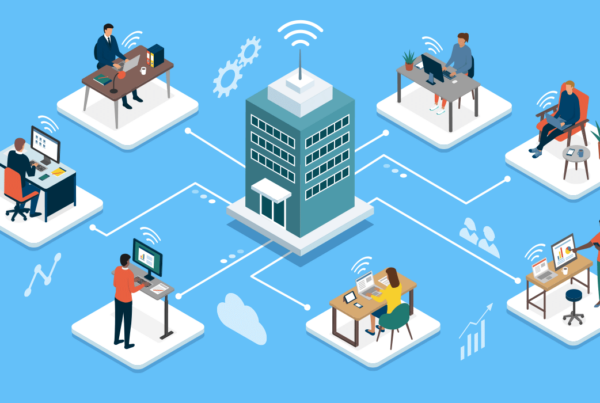A common challenge employers face is maintaining high levels of employee engagement and productivity. Disengaged employees can lead to decreased efficiency, higher turnover rates, and ultimately, a decline in profitability. Addressing this issue, the ability of employees to manage their own time emerges as a crucial driver of productivity and satisfaction.
When employees have autonomy in managing their time, they not only align their work responsibilities with personal commitments but also develop a stronger sense of ownership and responsibility.
Platforms like Softworks’ Employee Self-Service (ESS) exemplify this approach by offering robust features that put time management directly into the hands of employees. This empowerment leads to streamlined processes, reduced administrative burdens, and a more dynamic alignment between company goals and employee needs.
The Role of Employee Self-Service Tools
Employee Self-service tools are transforming engagement from employees by offering a more streamlined, efficient, and employee-centered approach to handling daily work processes. These tools empower employees by granting them direct access to manage their own work-related tasks which traditionally required HR intervention. This shift not only fosters a sense of autonomy and engagement among employees but also significantly reduces the administrative load on over-burdened human resources departments.
In the realm of workforce management — a suite of strategies and tools aimed at optimizing employee productivity and operational efficiency — employee self-service functionalities often include:
- Time and Attendance Management: Employees can log their work hours, view their timesheets, and verify their attendance records independently.
- Shift Scheduling: This provides employees with the ability to check their schedules, request shift changes, request additional shifts, and manage their availability directly, facilitating better work-life balance and flexibility.
- Absence Management: Employees can request time off, track the status of their leave requests, and view their leave balances, enabling proactive planning for both the staff and management.
- Personal Information Updates: Allows employees to update their personal details as needed, ensuring that the organization always has access to the most current information.
- Access to HR Documents and Policies: Employees can view and download important documents such as pay slips, tax forms, and company policies without needing to request them from HR.
By incorporating these tools into their operations, organizations not only improve operational efficiency but also enhance employee satisfaction and engagement. This autonomy allows employees to feel more in control of their work engagements and responsibilities, leading to a more harmonious and productive workplace.
How Employee Self-Service Time Management Tools Work?
Self-service time management tools are designed to facilitate a range of tasks that traditionally require manual intervention by HR personnel.
These tools are often encapsulated within an Employee Self-service (ESS) App and Portal, which serve as central hubs for employees to manage their work-related and personal information.

What does the Employee Self-service (ESS) App and Portal look like?
The ESS App and Portal provide a user-friendly interface through which employees can interact with. These platforms are accessible via desktop and mobile devices, ensuring that employees can manage their tasks on the go, enhancing flexibility and access to real-time data.

What features should an ESS App Have?
- Clocking In and Out with GPS Location: Employees can clock in and out directly from their mobile devices or desktops. The integration of GPS location tracking ensures accuracy in recording the employee’s location at the time of clocking, which is especially useful for remote or field workers.
- Viewing Clocking History and Work Schedules: Employees have the ability to access their complete clocking history and view current and future work schedules. This transparency helps employees plan their time more effectively and ensures they are aware of their work commitments.
- Requesting and Managing Leave: The app allows employees to request leave, whether it be annual, sick, or personal time off. They can track the status of their leave requests and view their remaining leave balances, which helps in planning future time off without the need to consult HR.
- Flexitime and Shift Management Functionalities: For workplaces with flexible scheduling options, employees can manage their shift preferences, apply for additional shifts, or swap shifts with colleagues directly through the app. This functionality supports dynamic work planning and helps accommodate personal needs and preferences.
- Personal Information Updates: Employees can update their personal information such as contact details, emergency contacts, and address changes directly through the ESS. This ensures that the organization always has the most current information without the need for paper forms or HR intervention.
- View Team Calendars: Team calendars can be accessed through the ESS, allowing employees to see when their colleagues are working, on leave, or have other commitments. This feature aids in coordinating team activities and planning meetings or projects.
- Send Notifications and Surveys: The ESS should enable management to send company-wide notifications and conduct surveys, enhancing communication and engagement across the organization. This tool is vital for distributing important information quickly and gathering feedback efficiently from employees.
By leveraging these features, self-service time management tools empower employees to take charge of their schedules and personal data, promoting a more engaged and proactive workforce.
Learn more: Softworks Employee Self-service App
Benefits of Employee Self-Service Time Management
Employee Self-service time management tools provide numerous benefits not only to employees but to the entire organization. These benefits streamline operations, enhance satisfaction, and contribute to a more dynamic and responsive work environment.
1. Enhanced Flexibility and Control for Employees
Employees gain significant control over their work schedules and personal data through self-service tools. This level of control allows employees to:
- Manage Work-Life Balance: By viewing and managing work schedules through an ESS, employees can better align their professional commitments with personal responsibilities, leading to improved work-life balance.
- Respond to Changes Quickly: Employees can adjust their schedules in response to unexpected life events without the need for lengthy HR processes. For example, swapping shifts with colleagues can be done directly through the app, accommodating last-minute changes efficiently.
“The staff at Oberstown have embraced the system and particularly love Softworks Employee Self-Service solution. They have more control over their own information and find it much easier to check rosters and book holidays and other absences.“ [Download Case Study]
Tom Gannon, Oberstown Detention Campus
2. Increased Accuracy and Reduced Administrative Load
The automation of time tracking and other HR processes through self-service tools greatly increases data accuracy and reduces the burden on administrative staff.
- Automated Record-Keeping: With automated systems, the chances of human error in data entry are significantly reduced. This leads to more accurate payroll processing and compliance reporting.
- Less Time Spent on Routine Queries: HR departments receive fewer routine queries about schedules, leave balances, and personal information updates because employees can find this information themselves through the ESS portal. This frees up HR resources to focus on more strategic tasks.
“Employee Self-Service is a game changer for the company. Before ESS, our HR team spent many hours responding to information requests from staff and processing absence requests. The Employee Self-Service feature now enables employees to request absences without HR or their manager’s involvement and has reduced the number of queries from employees as they can get the information they need immediately.“ [Download Case Study]
Niaz Ally, Business and Technical Project Manager, The Giftland Group of Companies
3. Improving Employee Satisfaction and Retention
The autonomy and flexibility provided by self-service time management tools are directly linked to higher employee satisfaction and retention rates.
- Empowerment Leads to Engagement: When employees are given the tools to manage their own time and information, they feel more empowered and valued. This empowerment fosters greater engagement with their work and the company.
- Flexibility Attracts Talent: Modern employees value flexibility. The ability to manage work schedules and personal data independently makes an organization more attractive to prospective employees and helps retain existing talent.
“For us, one of the key benefits is the availability of real-time information. Employees can log in at any time and see what their flexitime or leave balance is. They like the safety net of seeing a positive flexi balance.“ [Download Case Study]
Kymn McCullough, Financial Controller, Fusion Antibodies
4. Streamlined Communication and Transparency
Self-service time management tools enhance communication and transparency within the organization.
- Direct Updates and Notifications: Employees receive immediate updates about schedule changes, policy updates, or approval statuses directly through the ESS app. This real-time communication keeps everyone informed and reduces the likelihood of misunderstandings or missed information.
- Transparent Access to Information: With the ability to view schedules, leave balances, and other pertinent details, employees have a clear and transparent view of their work-related information. This transparency helps build trust and makes employees feel more secure in their understanding of where they stand.
“For employees, being able to see their leave balances and track their hours is all new and it’s been a positive for us.“ [Download Case Study]
Niamh O’Connell, HR Manager, St. Christopher’s
5. Enhanced Compliance and Reduced Error Rates
Implementing self-service time management tools helps ensure compliance with labor laws and reduces the risk of errors.
- Automated Compliance: Self-service systems can be programmed to adhere to labor regulations, such as overtime limits and mandatory break times, helping organizations automatically comply with legal standards.
- Reduced Payroll Errors: By allowing employees to review and confirm their time records before payroll processing, self-service tools help reduce errors in pay calculation. This accuracy is crucial for maintaining employee trust and satisfaction, as well as for avoiding legal issues related to payroll discrepancies.
“The feedback from employees has been really positive in relation to clocking in and booking holidays. People who I thought would never want to download an App have downloaded it and embraced it because it’s so intuitive. The Employee Self-Service App takes a lot of the smaller HR tasks away and is really easy to use.“ [Download Case Study]
Helen Wellock, HR Project Lead, Harman Technology
Overall, self-service time management tools are more than just technological solutions—they are part of a strategic approach to modernizing the workplace, enhancing employee autonomy, and improving organizational efficiency.
Learn more: Softworks Employee Self-service App
Maximizing the Benefits of Employee Self-service: Tips and Best Practices
To ensure that both employees and managers get the most out of self-service time management tools, it’s crucial to adopt specific practices that enhance usage and effectiveness. Here are practical tips and best practices to follow:

Practical Tips for Employees
- Regularly Update Your Information: Keep your personal details and contact information updated in the self-service portal. This ensures you receive timely updates and important notifications.
- Familiarize Yourself with All Features: Spend time exploring all the features available in the self-service portal. Understanding how to use features like shift swaps, leave requests, and schedule checks can help you maximize the benefits of the system.
- Utilize Mobile Capabilities: If your self-service portal has a mobile app (which it should), make sure to install it. This allows you to manage your tasks on the go and ensures you can respond quickly to schedule changes or approval requests.
- Set Up Notifications: Customize your notification settings to receive alerts for the things that matter most, like upcoming shifts or leave approval statuses. This keeps you proactively informed without needing to constantly check the portal.
Best Practices for Managers
- Encourage Regular Use: Fostering a culture of using the app regularly will increase adoption rates. If you notice people having issues then address them upfront to allay any concerns.
- Provide Training and Resources: Ensure that all team members are trained on how to use the self-service tools effectively. Providing easy-to-access resources, such as quick guides or tutorial sessions, can help employees feel more comfortable with the technology.
- Monitor Usage and Gather Feedback: Keep an eye on how your team is using the self-service tools and ask for their feedback on what works and what could be improved. This feedback can be invaluable in making the system more user-friendly and effective.
- Lead by Example: Use the self-service portal yourself and share your positive experiences with your team. Leading by example can motivate employees to integrate the tools into their daily routines.
By following these tips and best practices, organizations can enhance the adoption and effectiveness of employee self-service tools, leading to a more empowered and efficient workforce.
Learn more: Softworks Employee Self-service App
Conclusion
Throughout this discussion, we’ve explored the transformative impact that self-service time management tools can have on both employees and the organizations they belong to. By empowering employees to manage their own schedules, request leave, and update personal information independently, these tools foster a sense of autonomy and responsibility. This empowerment leads to increased productivity, satisfaction, and a dynamic alignment between personal commitments and work responsibilities.
We’ve seen how such platforms can streamline processes, reduce administrative burdens, and enhance communication and transparency within the workplace. The practical benefits are clear: more control for employees over their work-life balance, enhanced compliance with labor regulations, and a significant reduction in errors and administrative overhead.
We invite you to explore the potential of Employee Self-service time management tools further by requesting a demo of Softworks Employee Self-service.
Request a free Demo!
Take the first step towards a complete workforce management solution. Talk to us today!
About Tomislav Rucevic
Tomislav Rucevic, an SEO Specialist at Softworks, stands out as more than just a marketer. He’s a fervent writer and influential thinker passionate about Workforce Management, HR, and work-life dynamics. Holding an MBA in Marketing, Tomislav excels in creating content that delves into the complexities of the modern workplace.
His dedication to writing on these topics is highlighted in his MBA thesis, which examined the link between Employee Motivation and Quality Improvement. At Softworks, he expertly merges his SEO skills with his writing prowess, contributing to the company’s digital success and advancing discussions on enhancing work environments and achieving work-life balance.










